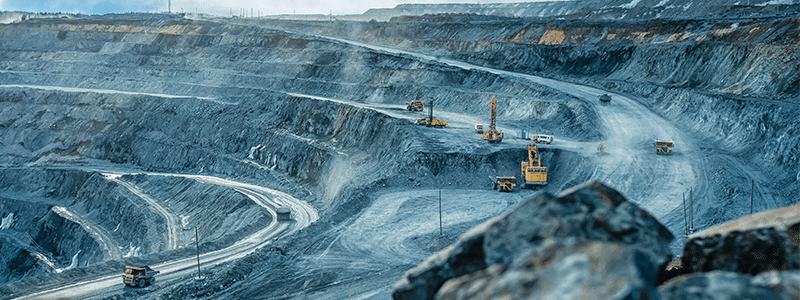This change introduces the largest number of modifications to the mining legal framework in recent times.
On December 30, 2023, Law No. 21,649 was published in the Diario Oficial amending the law that reduces or eliminates tax exemptions, whose entry into force was postponed in part by Law No. 21,536, the Mining Code, the Constitutional Organic Law on Mining Concessions, and the Law that creates the National Geology and Mining Service.
This change introduces the largest number of modifications to the mining legal framework in recent times. The following are the main changes introduced, taking into consideration those made by Law No. 21,420 and those introduced by the recently enacted law.
I) Amount of annual mining patents.
The difference between metallic and non-metallic concessions is eliminated, increasing the value of non-metallic mining patents according to the rules revised below:
- Exploration patents increase their amount from 1/50 to 3/50 of Monthly Tax Unit (UTM) per hectare.
- Regarding exploitation concessions, for the year 2024, 1/10 of UTM per hectare will continue to be paid for exploitation concessions on an exceptional basis. Thereafter, if the mining properties do not fall under the scenarios provided by the Law, they will be subject to a progressive increase from 4/10 of UTM per hectare during the first five years since they are not considered in the assumptions of the law for the reduced patent, up to 12 UTM per hectare from the thirty-first year.
The law provides the following hypotheses of reduced patent (1/10 UTM per hectare):
- The execution of mining works, having to prove annually that the activities or works have been started in a permanent and continuous manner, allowing the development of mining operations, meaning those referred to in Law No. 20,551 that regulates the Closure of Mining Sites and Facilities, including those arising from compliance with a mining site closure plan. The consideration of such operations will apply regardless of whether they are carried out on owned or leased properties.
- If no work is started, but the mining properties are included in a mining development project that has obtained an Environmental Qualification Resolution (RCA) or has been admitted for processing in the Environmental Impact Assessment System (SEIA) for its qualification, in accordance with Law No. 19,300, on General Bases of the Environment.
- If the requirements of the above hypotheses are not met, it is possible to opt for the reduced patent with respect to those belongings included in a project that, without having the obligation to enter the Environmental Impact Assessment System, has in process any of the permits established in Title XV of the Mining Safety Regulation. The patent for this concept may only be determined once.
For individuals, legal mining companies, mining cooperatives or individual limited liability companies that are holders of one or more properties whose total extension does not exceed 500 hectares, the benefit of accessing a reduced patent is established if the development of works in the area of at least one concession is accredited under any of the above mentioned reduced patent hypotheses, being presumed that they remain in such situation for the next five years.
Therefore, for those mining properties that are not covered by the described hypotheses, the amount of the patent per hectare will be equivalent to:
(a) 4/10 of UTM for the first five years of validity of the concession.
(b) 8/10 of UTM from the sixth to the tenth year of validity of the concession.
(c) 9/10 of UTM from the eleventh to the fifteenth year of validity of the concession.
(d) 1.2 UTM from the sixteenth to the twentieth year of validity of the concession.
(e) 3 UTM from the twenty-first year to the twenty-fifth year of validity of the concession.
(f) 6 UTM from the twenty-sixth year to the thirtieth year of validity of the concession.
(g) 12 UTM from the thirty-first year of validity of the concession.
II) Duration of exploration concessions.
Exploration concessions will have a term of 4 years, renewable for up to 4 more years if certain requirements for the delivery of geological information or processing before the SEIA are met. For this, the mining holder must, within the first six months of the last year of its concession, submit to the National Geology and Mining Service a report with all the geological information obtained in the exploration works that have been carried out during the term of its concession. Alternatively, the holder may submit to the service the documentation that proves the obtaining of an RCA with respect to its mining project during the term of the concession, or the admission for processing of its exploration project in the SEIA.
Exploration concessions whose term expires during the year 2024 will be understood to be extended until December 31, 2024, and the right of extension may be exercised for another 4 years within the first half of 2024.
Upon termination of the exploration concession, the original exploration concessionaire and its related persons are prohibited for one year from reacquiring exploration concessions located in the area of the expired exploration concession.
III) Limitation to the exercise of possessory actions by the mining concessionaire.
There is a relevant change in the exercise of possessory actions, in the sense that the mining concessionaire, who exercises a possessory action (such as the denunciation of a new work, for example) against the owner, possessor or mere holder of the surface land, must prove that he is the holder of an easement right or other right over such surface land.
It is also established that it is optional for the judge to establish the suspension or stoppage of the works denounced, and the concessionaire must prove that he is the holder of a real right and provide background information that justifies the serious and imminent danger involved in not granting the suspension or stoppage. In addition, if the suspension of the works is required, the owner of the works may stop its effects by offering a sufficient guarantee to be liable for its demolition or compensation for damages.
This represents a radical change in the protection of assets and critical infrastructure of projects, having to reevaluate the maintenance of mining property that was only maintained for security reasons of non-mining assets.
IV) Delivery of geological information.
A change is introduced in the delivery of geological information, specifying the delivery times and increasing the fine for non-delivery to 100 UTA, which may be doubled if such information is required by the service, also disqualifying the mining concessionaire to obtain the benefit of a reduced patent.
Under the new regulations, exploration concessionaires will have 30 days from the termination of their concession to submit to the service a report with all the geological information obtained from the exploration work carried out in the area corresponding to the concession.
Likewise, the exploration concessionaire must also submit a report with all the geological information obtained in the exploration works that have been carried out during the term of its concession before requesting the renewal of its concession for another 4 years.
Regarding the exploitation concessionaire, it must submit to the service every two years a report with all the geological information obtained from the geological exploration works carried out during said period.
V) Change of datum.
The references and the mention of the change of datum to SIRGAS are eliminated, leaving the future modification to the Mining Code Regulations.
Likewise, a procedure to be followed by the service and the mining concession holders for an eventual change of datum in the future is established.
VI) Cabinet measurement (mensura) and new deadlines.
The requirement of on-site measurement and construction of milestones is eliminated, allowing for a less costly and less time-consuming measurement operation.
As a result of the greater simplicity for the measurement operation, the terms for requesting the measurement are modified from 200 to 220 days to 90 and 120 days counted from the presentation of the survey, and for the presentation of the plan and survey report from 15 to 10 months counted from the date of presentation of the survey.
VII) Entry into force.
Except for the regulations regarding changes to the delivery of geological information, measurement and milestones, which will become effective once the corresponding regulatory changes have been made. The rest of the rules have already entered into force.
Finally, the Mining Regulations (and all other regulations) or administrative norms that may be necessary to execute the indicated changes must be modified within six months from the publication of Law No. 21,649.
For more information on these issues and their implications, please contact:
Antonio Rubilar | Director of the Public Law and Regulated Markets Group | arubilar@az.cl
Alejandro Montt | Director of the Energy and Natural Resources Group | amontt@az.cl




